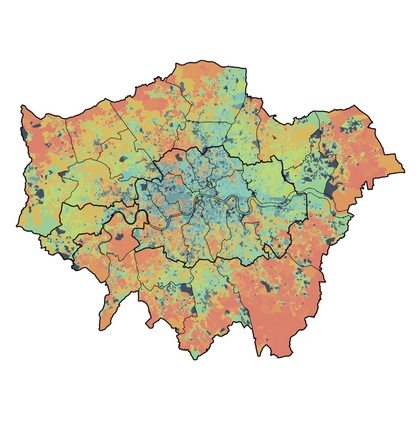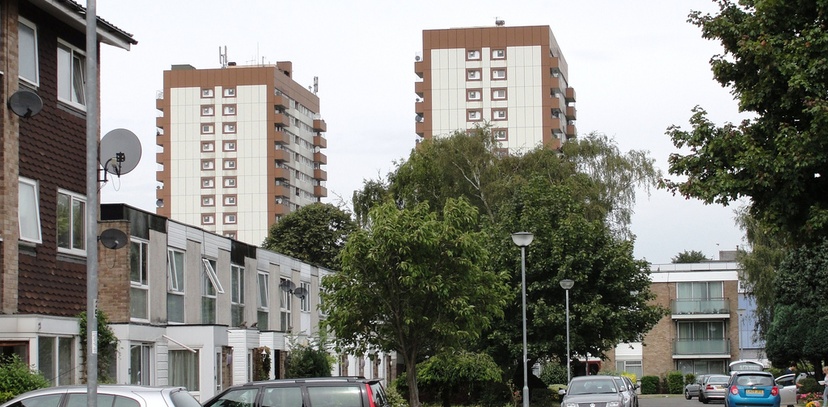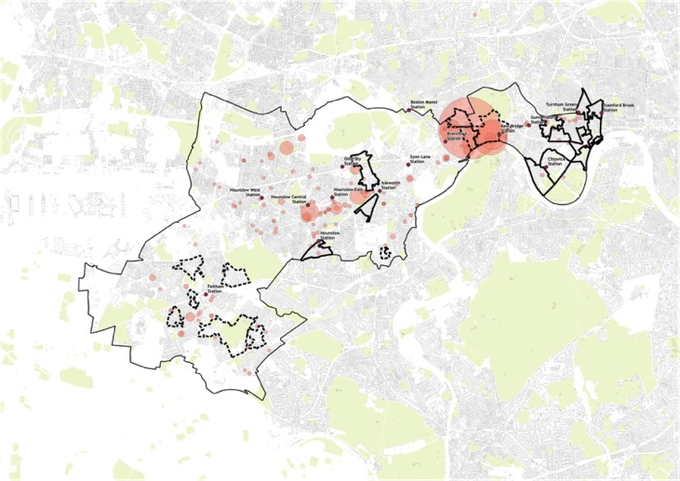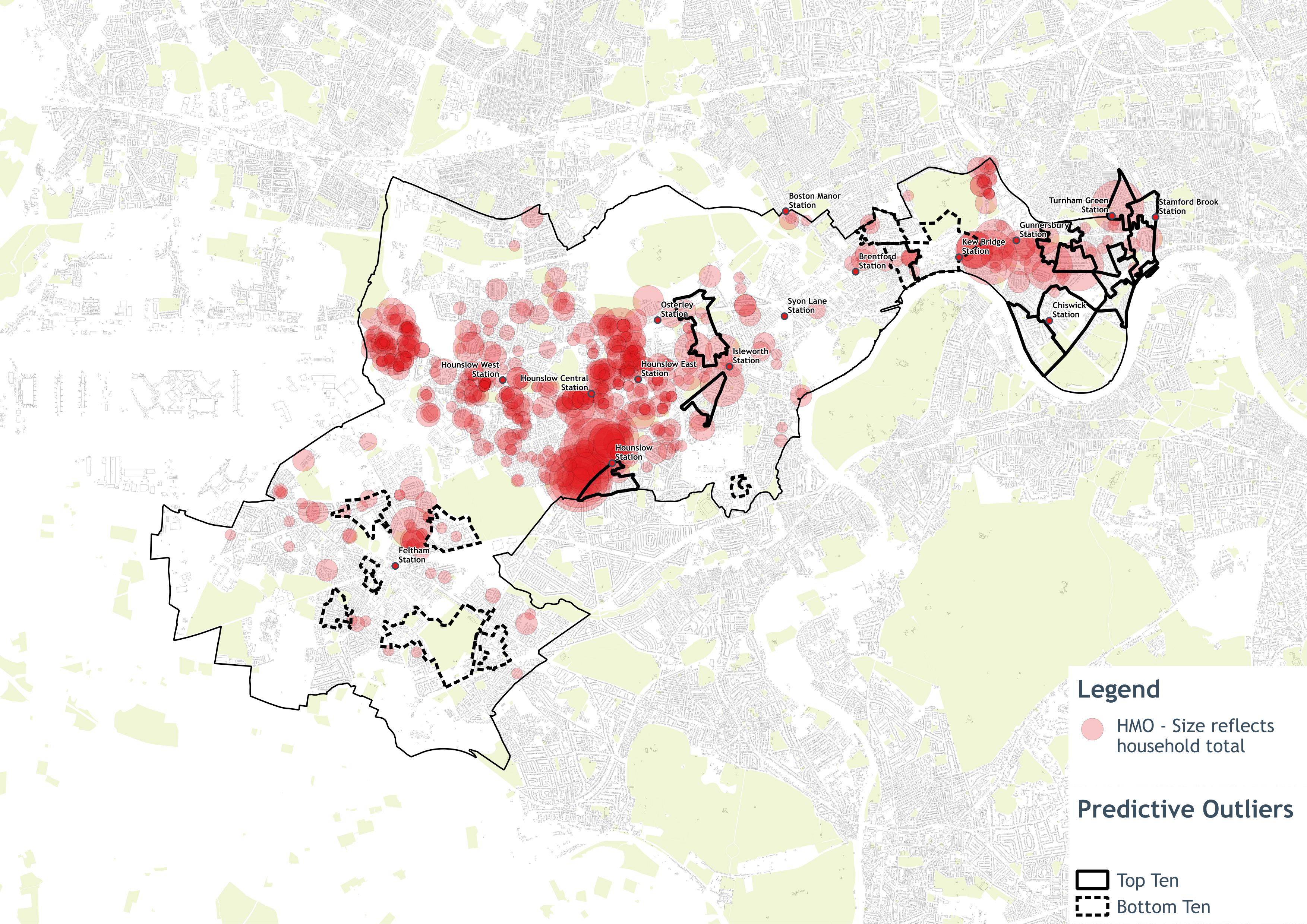

This is the final blog in a series exploring our work with Hounslow Council.
Our work found that across the Hounslow borough area, the change that mapped most closely with weak resilience was new housing development. It is this that is most likely to be threatening communities' ability to manage future shocks and stressors rather than international migration or population churn.

Completed residential units 2009 to 2015 mapped against resilience cluster outliers, source: GLA
Dotted lines indicate lowest predicted resilience; solid lines highest predicted resilience
Mapping the number of completed residential projects in 2009 and 2015 using GLA data showed a concentration of new house building in Brentford. The council has a target of 5,000 new affordable homes by 2022 and the Brentford area, close to Chiswick and with good transport links, yet with available land, is where many of these have been built.
Brentford is an area characterised by social housing estates. Deprivation is relatively high and the local community will have been heavily affected by both public sector austerity and benefit changes. In our analysis it emerged as a place with weak predicted resilience, and this is corroborated by data describing social needs and disadvantage.
The predictive data describes the circumstances of the local community now, not the impact of the new development. The disruption of development at scale, and the arrival of new residents often from different socio-economic backgrounds can put strains on local communities, on support networks and on local groups, services and social infrastructure.
Brentford will be similar to many areas across London where there is substantial housing development. House building at scale is most likely in areas where land is available and lower in value – both characteristics of areas of social housing that are socially and economically marginalised.
Completed residential units, 2006 to 2017, source GLA via GIPHY
This finding reinforces what we know about the need to support the people living alongside new development and to recognise the destabilising, and potentially negative, impact of new housing development on low income communities.
It is important to put in place the supports and services that residents need to help them cope, and to respect and nurture the assets and strengths in the existing community. These include social networks and informal supports that help people cope and get by, and the intangible attitudes, the attachment to place, sense of belonging, comfort with diversity, that underpin wellbeing and resilience.
For Hounslow, home to two Housing Zones, this highlights the need to look at community support in Brentford and for the Feltham Housing Zone, which is also close to areas of low predicted resilience.
We also mapped other types of housing that could possibly be associated with chalenges to community resilience, including HMOs.
Hounslow has an HMO licensing scheme, so numbers of registered HMOs in 2009 and 2015 could be mapped. From this we see a growth in the centre of the borough, and towards Heathrow and in the east. These do not map to areas of particularly low predicted resilience although the people living in HMOs are often characterised as transient and vulnerable, and the quality of accommodation may be low – all of which could threat resilience in areas where there are significant vulnerabilities. This data does not include illegal unlicensed HMOs which may be concentrated in other areas.

Location of registered HMOs, mapped against resilience cluster outliers, source: GLA
Our resilience model reveals the unexpected strengths and weaknesses of an area, highlighting neighbourhoods that may slip under the radar during more standard assessment processes. The value of the tool is its ability to flag areas where these vulnerabilities, and assets exist, allowing councils to target the areas that are most in need of their limited resources.
This is particularly relevant to the different agencies involved in planning and designing major interventions in the built environment, enabling an approach that recognises existing community assets and strengths alongside the need to support low income and vulnerable communities at times to change and disruption.
